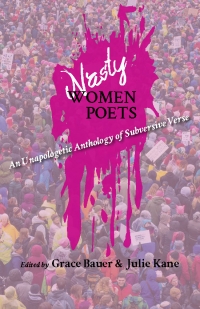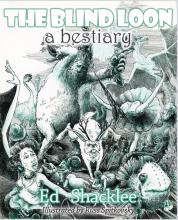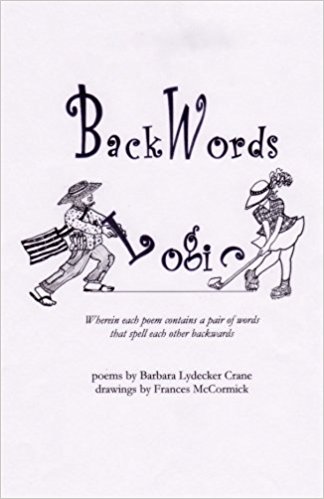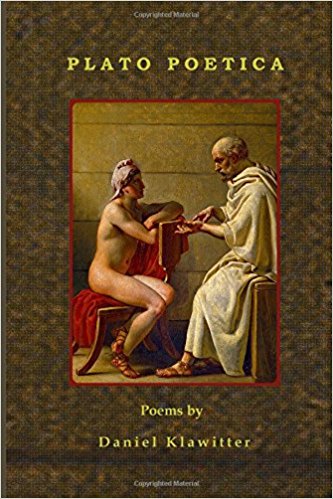If you have a book you’d like considered for a review in Light—one that includes a large helping of light verse and was published within the previous 12 months, or that will be published in the next six—please send a copy to:
Barbara Egel
PO Box 408250
Chicago, IL 60640
(Pre-print-run electronic copies may be sent to lightpoetryreviews@gmail.com)
Light on Their Feet
(Reviews of books written or edited by Grace Bauer and Julie Kane, Ed Shacklee, Barbara Lydecker Crane, and Daniel Klawitter)
by Barbara Egel
Nasty Women Poets: An Unapologetic Anthology of Subversive Verse, edited by Grace Bauer and Julie Kane. Lost Horse Press, 2017.
At one point in the Wonder Woman movie, Diana Prince briefly loses her hearing. She’s disoriented and very worried about everyone she’s supposed to be defending, but it doesn’t take her long to return to fighting form. The Nasty Women Poets anthology represents a similar moment on a national scale: a man made a noise so shocking, calling his debate opponent a “nasty woman” (before getting chosen by the Electoral College) that we couldn’t hear, couldn’t think for a moment. Then some wonder women got busy kicking ass. In just a few months, the Nasty Women Poets editors conceived of the book, solicited submissions, and got what must have been an overwhelming response, since they’ve included such a range of voices, styles, and subjects. This anthology is the burn, the salve on the burn, and the funny story you make up years later to explain the scar. In other words, its 320-plus pages would require a master’s thesis to parse, and we don’t have time for that, so let’s focus on the funny story. Er, the sort-of-funny story? Not all, or even most, of this volume is deliberately humorous—and pretty much none of it is “light” in the sense of amusing, frothy, and lacking gravitas—but it is saturated with wit.
This is a proudly feminist collection, and it does contain some yoni-gazing pieces with a 1970s tofu-night-at-the-collective tone. However, 1) those poems are quite good and make a fresh point about violence in the world of #45, 2) they’re among many aesthetic approaches represented in the book, and 3) their sense of generational connection is important to the cohesiveness of the collection, and, I would surmise, to the intent of the editors. Marge Piercy, Alicia Suskin Ostriker, and Diane Wakoski make appearances here alongside poets born during an actual Clinton presidency. Along with older and younger poets (much, much older if you include Maryann Corbett’s lovely translation of 14th-century poet Christine di Pizan) and more- and less-seasoned ones, there are straight and queer poets; poets representing multiple countries and cultures; Black, Latinx, Native, and Asian poets; and a broad range of poetic schools and styles. One of the most striking characteristics of this collection is how its size affects the way its poems speak to each other. In a more general anthology or journal, any one of these poems would likely be labeled political and/or feminist. But having hundreds of them between the same covers starts an interesting conversation. No individual poem has to explain or defend itself to make a place for itself on the page. Rather, each poem is an extension of, a cheer for, or a comfort to the rest.
For example, there are, unsurprisingly, several poems focused on stuff that happens in the bathroom. Jenna Le’s “On the Lesser-Known Uses of Meat Tenderizer” enumerates the skills a woman learns when she’s still in junior high for avoiding menstrual blood stains and dealing with them when—in spite of machinations that would put Le Carre to shame—they happen anyway. Le’s poem makes the connection between this mundane and monthly hassle and a talent for disappearing other things:
… You need to learn
the art of covering your tracks before
making tracks, you must master how to burn
love letters prior to allowing your
mind to love, and you must know how to strike
the backspace key before you learn to write.
On the facing page, Kim Lozano parses the threat to both boys and girls of the tampon machine in the restroom, and a couple hundred pages later, Kim Addonizio’s heartbreaking “To the Woman Crying Uncontrollably In the Next Stall” brings the theme into adulthood. (Women’s room attendants should add Addonizio’s poem to their supplies along with the baby wipes and knockoff perfume. It would come in handy.)
The poems with the most impact—and often the ones that made me laugh at the surprising turns they took—manage the delicate balance of metaphor, sex, politics, and humor. Elizabeth Lara’s “Airport Security” and Anne Champion’s “Indira Gandhi Speaks to Nixon” both play with the invisibility and misconstrued toothlessness of older women. Gandhi’s internal monologue puts Nixon under a microscope (and in a dress), while the “ancient granny” in Lara’s poem unloads an arsenal at the TSA line, daring the officers to “Pat me down, sonny.” In “Couplets: Breaking the Boycott,” Andrea Selch’s queer speaker saunters into a Chick-Fil-A, putting, as it were, Fried before Pride and flirting with Joy, the cashier. A few pages later, Pat Valdata contrasts a mother admonishing her daughter to sit with her knees together “because girls are not allowed / To have a crotch” with that daughter becoming a pilot with knees wide apart and a joystick between them. The opposition between “ladylike” and “joy” functions on all sorts of levels. Similarly, Rose Kelleher gets her own in “Every Girl For for Herself.”
There is word play, experimentation with the space on the page, and the kind of self-reflexive messing around that leads to meta-goodness. Cathleen Calbert’s “Bad Girl Attitude” zigzags jaggedly across the white space while Erin Murphy’s “Does This Poem Make My Butt Look Big?” channels Lucille Clifton and jiggles loosely on the page. Carolina Morales folds tight origami rhymes into each other in “To My Eleventh Draft,” and Sharon Dolin has a blast in “Unpairing: Proofreading My Marriage” with lines such as
Change Forever to . . . For never.
For better or worse to . . . Far better, divorce.
In a world where “covfefe” gets flirted with by Merriam-Webster, count on Allison Joseph to coin neologisms that actually make sense—that, in fact, seem like words that exist in some better universe.
From now on, I will not answer
to my name, but only to the title
Your Feminence,
an acknowledgement,
finally, of how spectacularly flowdacious
I am. I am no shineocerous
clad in gaudy jewelry
and tight clothes, …
If you are still not convinced that a review of this book belongs in Light, let me reassure you that some familiar names will greet you between its pink covers, including A. E. Stallings, Gail White, Barbara Crooker, Marilyn Taylor, and Melissa Balmain, but I should warn you that some of them have chosen heavy weaponry over whimsy. You will come across guffawable lines, as in Laura Ruth Loomis’s “Hex On My Ex” (“May you start holy rolling, speaking in tongues and hollering / ‘Thank you Jesus!’ in synagogue. . . . May you be at the top of every telemarketer’s list”). You will find odd little gems that stick with you even after another hundred poems, such as Shirley J. Brewer’s “Signature.” Mostly, you will feel like there are people out there who get why you turn the news off and turn it back on again, why you want to stage an intervention for the whole country, and why sometimes—in person and in poems—you just need to hang out with your girls.
NOTE: There is another anthology called Nasty Women: Feminism, Resistance, and Revolution in Trump’s America, edited by Samhita Mukhopadhyay and Kate Harding. It contains essays, it is very political and intersectional, and it is very good. If you accidentally order the wrong one, you are still getting a wonderful book, but do go back and make sure you get the poetry as well.
The Blind Loon: A Bestiary, by Ed Shacklee, illustrated by Russ Spitkovsky. Able Muse Press, 2017.
Elsewhere in this issue, Susan McLean tells you why reading Ed Shacklee is good for you, so I will focus on why you need this book. Following in the footsteps of T. H. White and Richard Wilbur, among others, Shacklee has created a catalog in which he informs readers of the characteristics of real creatures (“The Camel”), made-up creatures that we’ve all heard of (“The Satyr”), and creatures Shacklee discovered lurking in the modern mind and now formulates —in the Prufrockian sense —for your edification (“The Logorrhea”). A book like this could take one of several unsurprising tacks: it could be family fare, with G-rated puns and pat life lessons; it could swerve in the direction of Ogden Nash manqué and aim for a cleverness it doesn’t quite achieve; or it could be the zoologically minded cynic at the end of the bar, shooting down all hope for humanity. Instead, Shacklee’s collection feels as if it were written by some witty, self-deprecating Moral Hygiene teacher from a century ago, who tossed out the primer and told the truth. For all that The Blind Loon elucidates human flaws both eternal and contemporary, it notably lacks cynicism, and as dark as the book gets, its goal seems to be to prevent us from screwing up—to make us better so we can maybe be a little bit happy.
But that’s my conjecture. What is on the page is a ton of fun even when it gets dark. First of all, forms are disciplined, meters are tight, and rhymes can be unearthly. (“The Rhinoceros” ends with “he’ll bump into his dreams distilled, a / heavy date, his own Brunhilda.”) Shacklee sometimes even seems to let wordplay guide him to new levels of meaning, as in “The Wyvern,” which includes the line, “for there are many states, estates, or states of mind at least,” thus moving from geography to psychology balanced on one sonic minim. Rhyme can actually lead to enjoyable anticipation of the plot or point of the poem. “Great White Hunters” is a monorhymed piece about the yeti. You know the word “spaghetti” is inevitable, and guessing how Shacklee will fit it in is a delicious itch he doesn’t scratch until the final stanza.
A bestiary is, essentially, a taxonomy, and in his made-up creatures, Shacklee names the shadowy characters and gruesome beasts hiding inside the ordinary people we meet each day. He makes useful distinctions between the genus-sharing Snipe, Snub, and Snide, while describing the Mope, the Pleasant, and the Slink in detail, the better to be avoided—or looked for in the mirror. In fact, the crux of this book might be summed up in one of its shortest poems, “Pandora”:
There weren’t a million evils, only two,
for all I found within was me and you—
and just a glimpse at truth was all it took
to be condemned by those who wouldn’t look.
Shacklee is clearly widely and deeply cultured (I refuse to be persuaded that “The Moaning of Life” doesn’t refer in some tiny way to the British sitcom ’Allo ’Allo), and everyone from L. Frank Baum to T. S. Eliot makes an appearance one way or another. I will be returning to this book frequently not only because each poem stands alone so beautifully, only to be made richer by its context, but also because I suspect I’ve missed a lot that’s waiting to be discovered, looked up, and savored.
A final word about the illustrations: Spitkovsky renders in pictures what we’re supposed to get out of these poems—sometimes exactly what the mind’s eye conjures, and sometimes, something better. The style shades from Tenniel to Mort Drucker to Louise Fitzhugh, riding the line between charm and horror. Shacklee’s “The Mope” is a creature I’ve met, but I didn’t fully comprehend its ugliness until I saw the art. The distinction between the Common and the Rare Snoot is, well, a hoot.
It’s a good thing this book is hardbound because it will get considerable use.
Back Words Logic, by Barbara Lydecker Crane, with drawings by Frances McCormick. Local Gems Press, 2017.
Back Words Logic has some characteristics that might cause you to assume it’s not worthy of adult attention: the illustrated poems are all four lines long, and—more lip-curling still—they have a gimmick. But if you dismiss this book, you lose. It is unpredictable, a ton of fun, and boy will you wish you’d come up with that gimmick. Crane has collected a whole lot of mirror-words—or Janus words, as they are sometimes called—which spell something different when read backward. (Think pot and top.) She then finds a way to include both in a short poem accompanied by a drawing.
All of the poems work within the theme, but some really launch past the orbit of the book’s concept and succeed as stand-alone verses:
HER TYPE
She designed a serif typeface
that’s not the client’s preference.
He fires her . . . she loses face . . .
and twenty-six letters of reference.
While that example has a rather obvious theme (in what other context are you going to put “serif,” after all?), sometimes Janus pairs don’t point as directly to a specific situation, and Crane finds fresh contexts in which they can operate. For example, “Five-legged Spider” sees a hand as an arachnid committing the worst of guacamole faux pas. (Flip around “spider.” Go ahead, I’ll wait.) Indeed, some of the word pairs find such apt situations, I wish the poems had gone on longer to explore the ideas more fully. A poem in which peek / keep finds a woman looking into a box of old love letters, or one where part / trap defines a marriage could be fleshed out to great effect.
The drawings are charming, comfortable, and a bit retro, reminding me of my circa-1975 elementary school textbooks. Sometimes, as in “Drawback,” they help to cement the wordplay. Other times, as in “Sniper,” the drawing literally pushes the point home.
Crane and McCormick have taken a seed of an idea and grown it into quite an arbor—sometimes heavy with tantalizing fruit, always inviting. Oh, and yes, of course, The Shining makes an appearance.
Plato Poetica, by Daniel Klawitter. Kelsay Books, 2017.
This book takes quotations from Plato and creates poems about / after / around them, sometimes going far afield of the original quote and then relying on a rereading of the epigraph to tie it all together. This is a very pleasant process, and Klawitter’s poems bring Platonic thought into all kinds of unexpected situations. For example, “I am the wisest man alive, for I know one thing, and that is that I know nothing,” from the Apology, gestates a poem about the contortions and concessions a poet makes to appear in a mainstream journal. “It is better to accomplish a little well than a great deal unsatisfactorily” heads a sweet and sexy love poem.
Many of the poems are in loose meter, but rhyme always asserts itself at some point, which, to coin a metaphor, tightens the core muscles of the poems so they can do more thematic heavy lifting. “He Contained Multitudes” employs density of internal and end rhyme to contrast the speaker with the expansive lines of Whitman:
Walt Whitman’s ambitions
were so large & ferocious
they filled an entire Kosmos!
Mine is a smaller gnosis—
a microscopic intuition,
a ghost almost imperceptible.
A poem that goes bump in the night.
My tiny poltergeist
of the philanthropic transaction:
Just watch me disappear
out of sight with satisfaction.
I am infinitesimal.
I contain so many subtractions.
One of the most fruitful uses of this book would be as a way into Plato’s work for some resistant friend or student, since Klawitter finds and highlights both the humor and the practicality of the philosopher. If your most lasting impression of Plato is the grinding headache you acquired in that undergraduate Western Civ survey course, let Daniel Klawitter reintroduce you. You will most certainly have fun.
Barbara Egel cut her light-verse teeth on Dorothy Parker and Ogden Nash while still in elementary school, causing her teachers no end of concern. She met Light Founding Editor John Mella and began reading Light almost at its inception, long before she imagined knowing its current august personages. She lives, teaches, and writes in Chicago.




